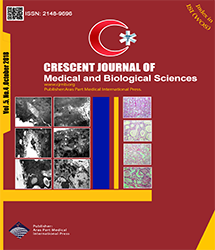
| Original Article | |
| Noise Stress Impairs Social Interaction in Adult Male Mice: Role of Oxidative Stress and Neuroendocrine Markers | |
| Farzad Salehpour1,2,3, Javad Mahmoudi2, Fereshteh Farajdokht2, Nazila Eyvazzadeh1 | |
| 1Radiation Research Center, Faculty of Paramedicine, AJA University of Medical Sciences, Tehran, Iran 2Neurosciences Research Center (NSRC), Tabriz University of Medical Sciences, Tabriz, Iran 3ProNeuroLIGHT LLC, Phoenix, Arizona, USA |
|
|
CJMB 2018; 5: 272–278 Viewed : 6604 times Downloaded : 4118 times. Keywords : Chronic noise stress, Acute noise stress, Social interaction, Social behaviors, Antioxidant status, Cortisol |
|
| Full Text(PDF) | Related Articles | |
| Abstract | |
Objectives: Noise is a potential environmental stressor affecting brain function as evidenced by altered stress neurotransmitters and hormone levels and psychobehavioral changes. Here, we explored the effects of noise exposure on the social behavior of mice as well as cerebral oxidative stress and neuroendocrine markers. Materials and Methods: In this experimental study, adult male mice were randomly allocated in; control-acute, acute-noise 90-dB, acute-noise 110-dB, control-chronic, chronic-noise 90-dB, and chronic-noise 110-dB groups. Animals in acute- and chronic-noise groups were exposed to 2 h/day of 90- or 110-dB white noise for one-day and three-month, respectively. At the end of the noise interventions, mice subjected to social interaction test. Also, serum levels of cortisol and cerebral malondialdehyde (MDA) levels, and superoxide dismutase (SOD) and glutathione peroxidase (GPx) activities as well as total antioxidant capacity were measured. Results: Although mice in both acute noise 90- and 110-dB groups did not show any alteration in social behaviors and novel recognition performance, mice in chronic noise in 90- and 110-dB groups exhibited lower levels of mentioned behavioral paradigms. Moreover, these behavioral changes in the both chronic noise groups were accompanied by lower body weight, increased MDA levels, and decreased SOD and GPx activities, and reduced total antioxidant capacity levels. Interestingly, the acute noise increased brain MDA levels as well as enhanced SOD and GPx activities and total antioxidant capacity. Finally, we found lower serum cortisol levels in both acute and chronic groups. Conclusions: The noise exposure at levels ≥90-dB impairs sociability, associated with an imbalance of cerebral oxidative status and increased stress hormone. |
Cite By, Google Scholar
Google Scholar
PubMed
Online Submission System
 CJMB ENDNOTE ® Style
CJMB ENDNOTE ® Style
 Tutorials
Tutorials
 Publication Charge
Medical and Biological Research Center
About Journal
Publication Charge
Medical and Biological Research Center
About Journal
Aras Part Medical International Press Editor-in-Chief
Arash Khaki
Deputy Editor
Zafer Akan


















